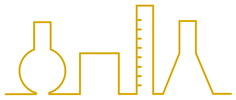|
5 min read - NOS/TOK Engaging students with the nature of models in chemistry is something I have started doing more frequently in recent years. Given that topics Structure 1 and Structure 2 in the new course are explicitly named Models of... , it feels like a better conceptual framing to address these ideas. When introducing atomic structure (now Structure 1.2 - The nuclear atom), for example, the Mystery Box activity has been useful in provoke some thinking about how we produce scientific models as well as their inherent limitations. In essence, you fill one or more box with objects, and ask students to sketch a model of what might be inside by playing with the boxes but not opening them. It can be helpful to have one box containing something far removed from a classroom to make a point about their likely paradigm when guessing the contents.
After sharing their thoughts with the rest of the class and considering additional experimentation to improve their models (float?/mass?/X-ray?/etc.) they will be desperate to know what's actual inside the boxes. At this point, it can be interesting to tell them that you also don't know. They will hate you for a short period of time but it demonstrates a key challenge in scientific modelling - we are trying to represent things that we will never be able to see directly. Instead, we must settle for degrees of confidence in the knowledge we produce in place of certainty. (To avoid lasting resentment, it is wise to tell them the contents of the box at a latter point in the lesson.) This activity ties in nicely to the development of atomic models which have, over time, changed as new evidence comes to light. All atomic models have presented some useful characteristics for understanding matter be it the plum pudding model, the Rutherford model or the Bohr model. For reference, here are some related ideas that might be explored in a TOK class (TOK concepts highlighted in bold). Scientific models...
The Structure 1.2 slides containing this activity with some prompt questions can be found here.
0 Comments
Leave a Reply. |
ArchivesCategories |
- Home
-
Topics
- Course structure
- Measurement in chemistry
- Structure 1 - Models of the particulate nature of matter
- Structure 2 - Models of bonding and structure
- Structure 3 - Classification of matter
- Reactivity 1 - What drives chemical reactions?
- Reactivity 2 - How much, how far, how fast?
- Reactivity 3 - What are the mechanism of chemical change?
- IA - The scientific investigation
- Core concepts
- NOS and TOK
- Newsletter
- Podcast



 RSS Feed
RSS Feed